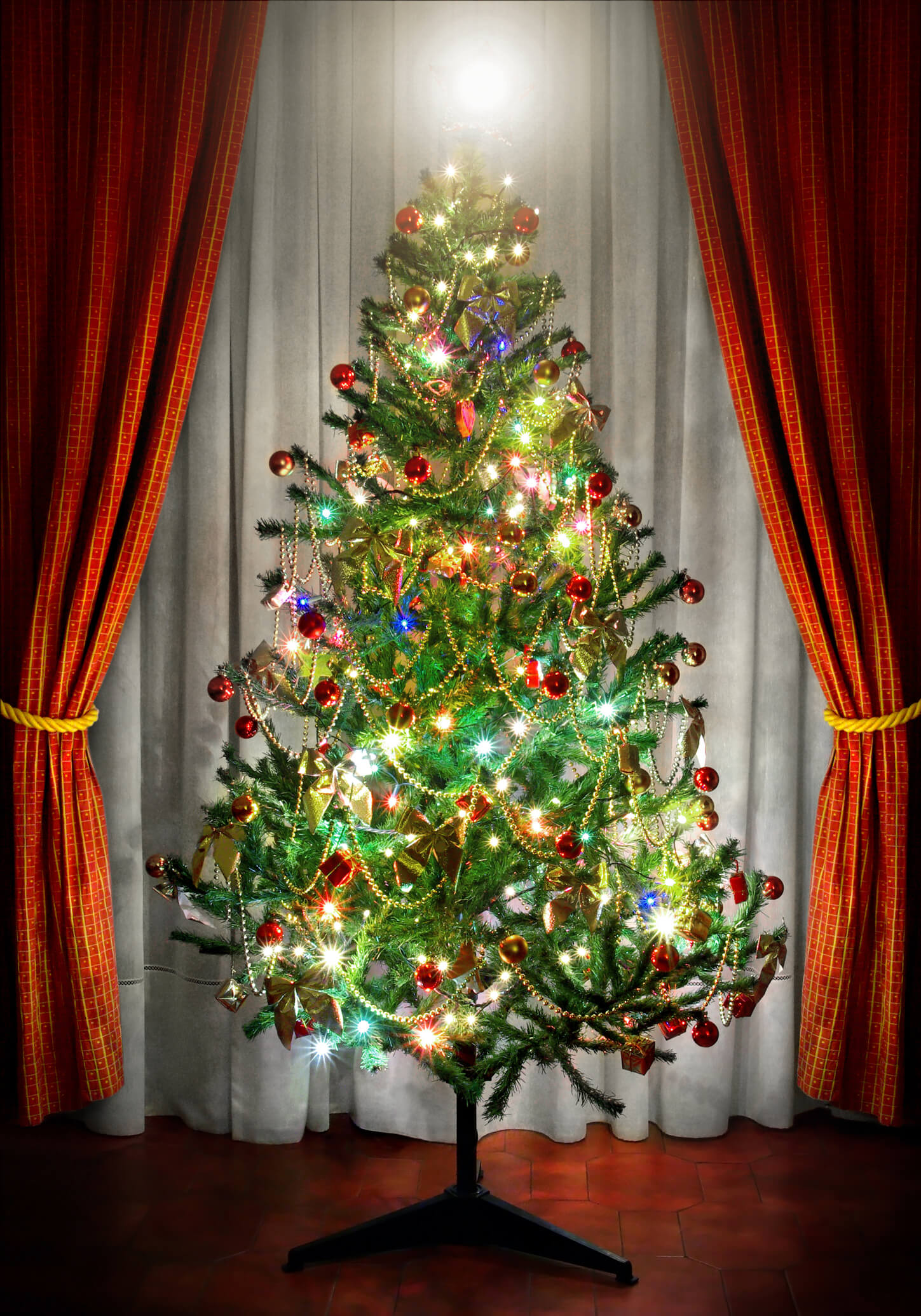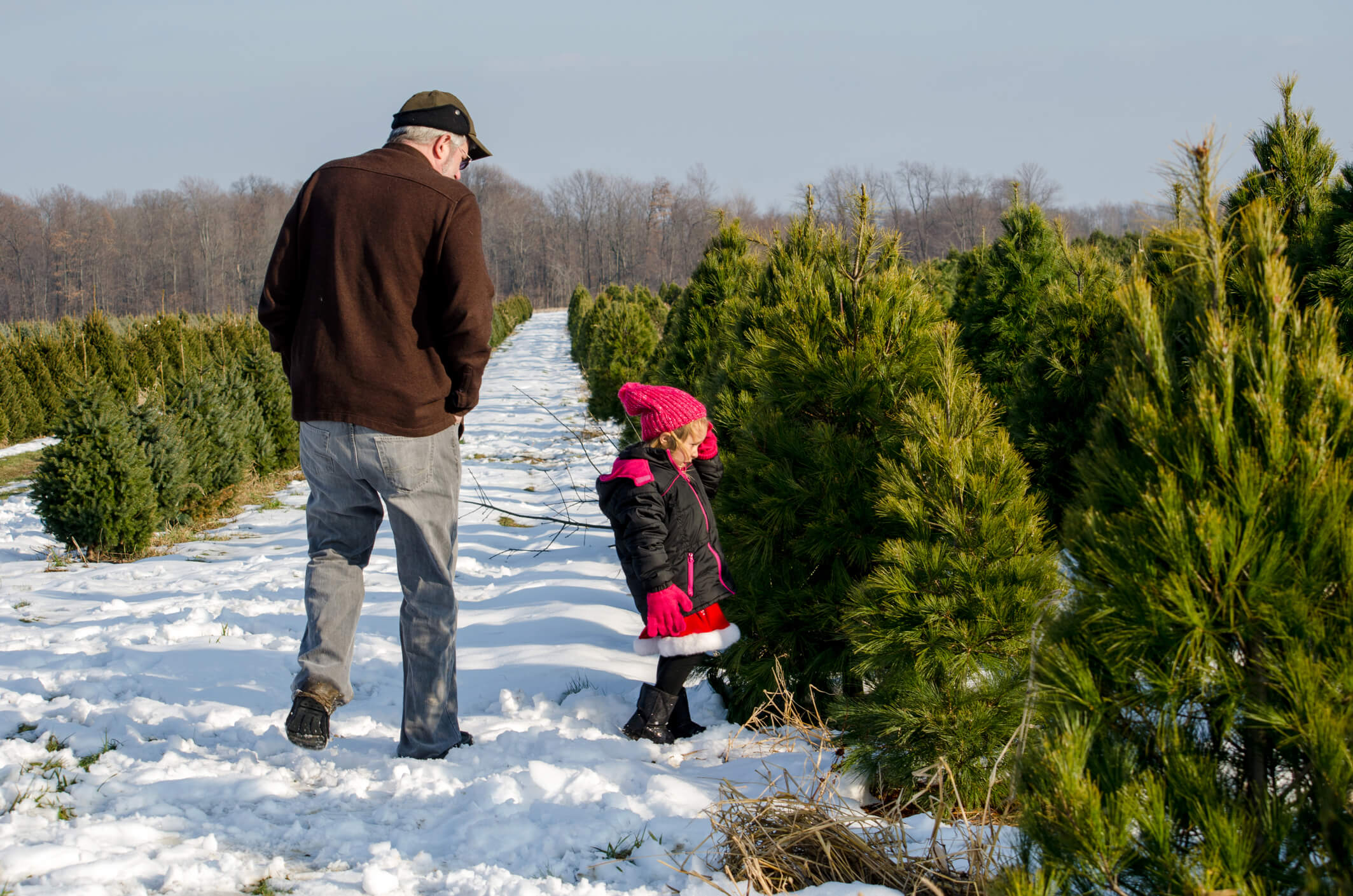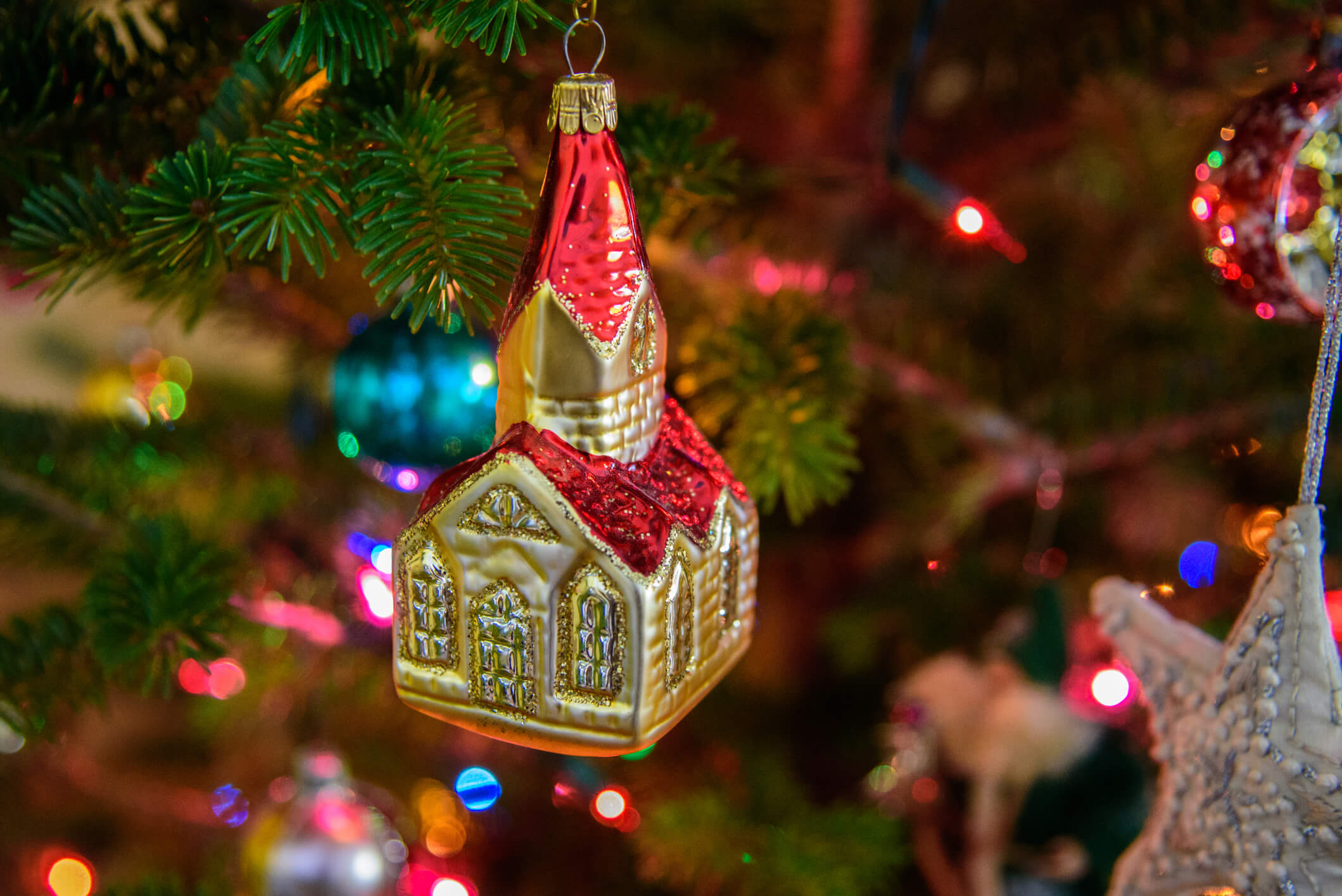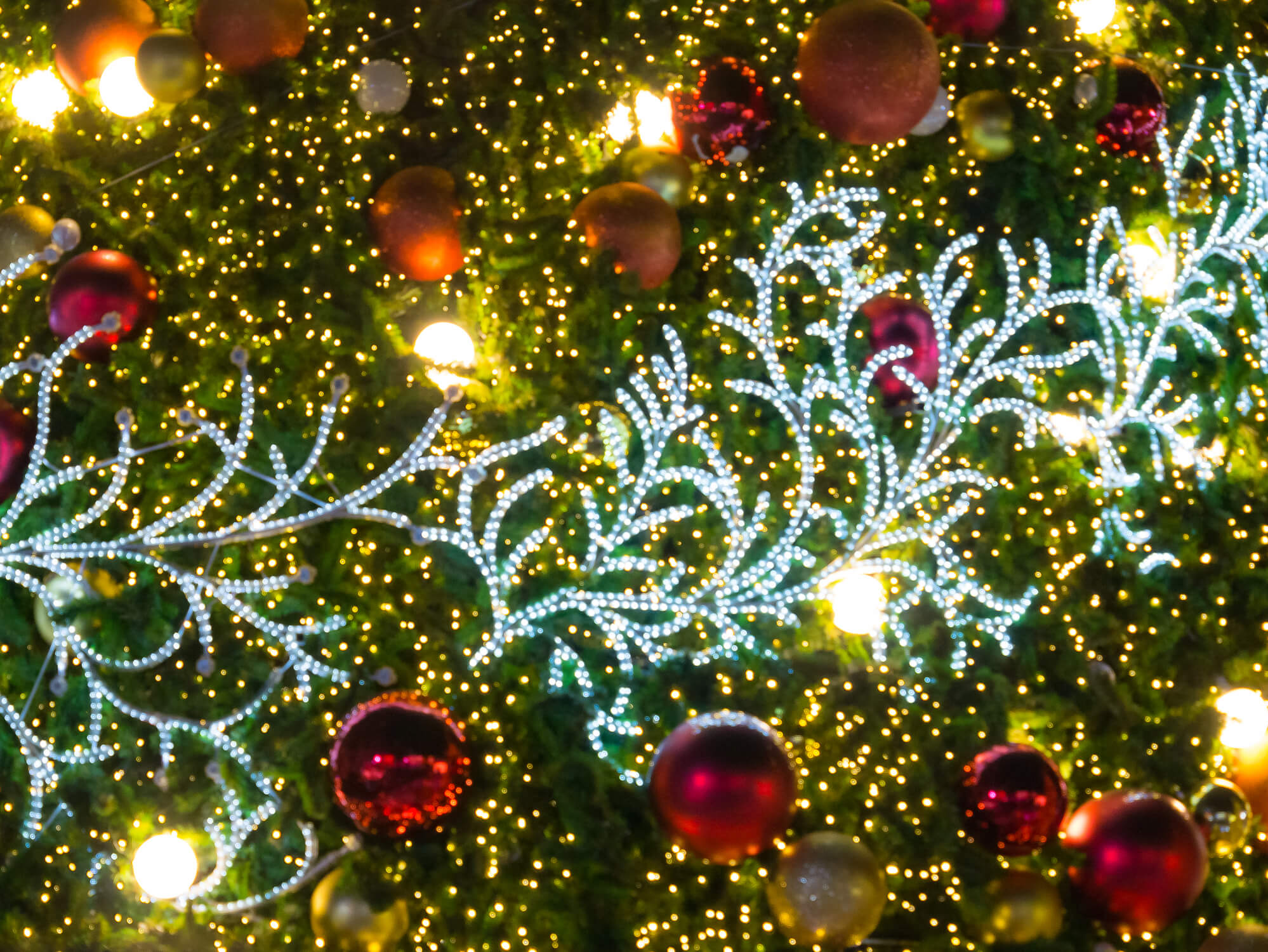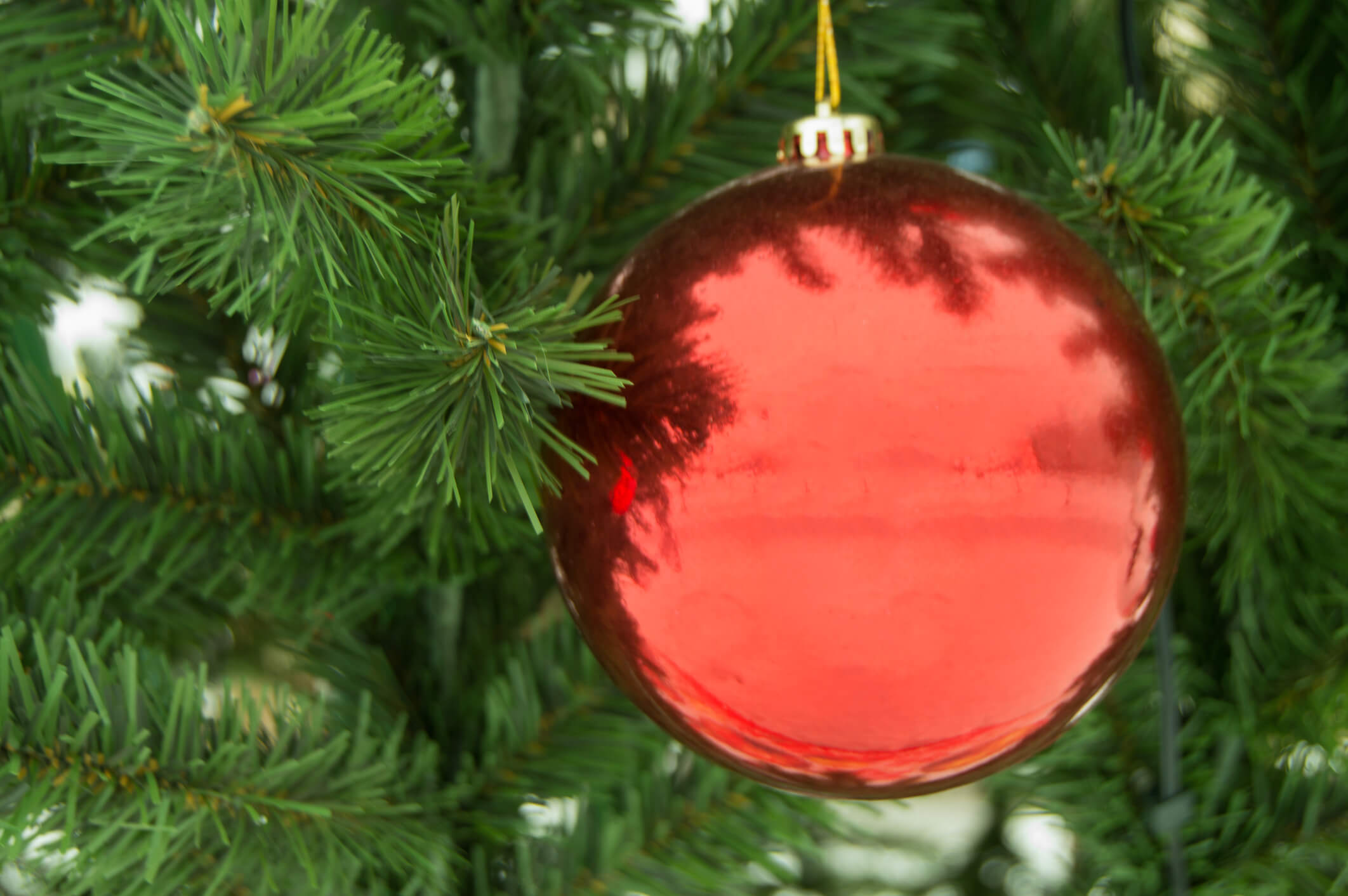
My birthday is just around the corner, which means that it is time for our annual Christmas conversation – should we buy a real tree or an artificial tree this year? I’m not sure why we still have the conversation since for 47 years we’ve come to the same conclusion, but it seems wise to rehash all the pros and cons before we head out to buy the most perfect 7 foot Douglas Fir we can find.
If you’re going shopping for a tree soon (and traditionally, this weekend is the busiest tree buying weekend of the season), perhaps you should have a serious conversation about options before you head out. There are definitely things to consider before you spend your hard earned dollars!
ARTIFICIAL TREES

- Are convenient. Unpack it from its box or bag, put it in the stand, fluff it out a bit and you’re ready to go! Some are even pre-lit so the battle with strings of Christmas lights is over.
- Are clean. No needles to vacuum, no bugs to invite inside and no water spilled on the floor eliminates extra chores during an already busy time of the year.
- Are hypoallergenic. Real trees often carry pollen and mold inside, making some people miserable throughout the holiday season.
- Are safe. Because they are usually made from flame retardant materials, artificial trees are not a fire hazard.
- Are perfect. Let’s face it, real trees are rarely full, symmetrical and balanced from top to bottom. Artificial trees are designed to be flawless specimens.
- Are reusable. Artificial trees can be used for several years before they begin to show signs of aging.
- Are not biodegradable. Artificial trees are often made from polyvinyl chloride (PVC) which will not completely break down in a landfill. Instead, the plastic of the tree becomes microplastics which remain in the soil indefinitely. Microplastics are also carried by the wind and can wind up thousands of miles away from the original disposal site.The tree you throw away will be around long after you are gone.
- Are not typically recyclable. To reform an artificial tree into another usable item requires advanced technologies that most communities simply do not have.
- Are not environmentally friendly. According to the most recent research, each artificial tree is responsible for adding 88 lbs of CO2 to the environment, or 10 times that of a real tree.
- Are not usually a Made In The USA product. Check the labeling on that new artificial tree and you will most likely read the words “Made In China.” Over 85% of the 10+ million artificial trees sold each year originate in China. Dollars spent for artificial trees made abroad could instead be used to support local farmers.
LIVE TREES

- Are memory-making. A yearly trip to the local Christmas tree farm to cut down the perfect tree can become a cherished family tradition.
- Are fragrant. No candle or canned evergreen spray can duplicate the scent of fresh cut evergreens.
- Are unique. Each quirk of a real tree becomes an opportunity to celebrate nature. A hole can become a frame for a special ornament. Even a Charlie Brown tree can be beautiful.
- Are uplifting. Research tells us that surrounding ourselves with green plants gives a boost to our mental health. Live trees are no exception. They lower anxiety and improve our immune systems, both a plus in what can be a happy, but stress-filled season.
- Are biodegradable. Depending on the conditions, a live tree can decompose within six to eight months of disposal.
- Are recyclable. Chopped into kindling, a live tree can become firewood for an outdoor firepit. Placed along a fenceline or in the garden, it can become a shelter for animals throughout the winter months. Weighted down in a lake, it can become a sought after fishing spot.
- Are environmentally friendly. Christmas trees assist in converting harmful carbon dioxide into the oxygen that we need to breathe. As they grow, they filter water, reduce erosion causing runoff, cool the air that surrounds them and provide homes for wildlife.
- Are contributing to local economies.. Christmas tree farms are found in literally every state in the union, including Alaska and Hawaii.
- Are part of a sustainable future. For every live tree that is cut from a grower, three more are planted. Currently, the United States has over 350 million Christmas trees in their growing stages. (On average, it takes 8 - 10 years for a tree to reach its maturity.) Growers use 10 times fewer resources to produce their trees than do the factories that produce artificial ones,
- Can be messy. Live trees tend to drop needles, especially as the season progresses.
- Can be allergy producing. Some people simply cannot tolerate living with a tree in a closed space.
- Can require maintenance. Live trees need adequate water to stay supple. Water levels need to be checked daily.
- Can be a fire hazard. Trees that are dry can catch fire. It is important to keep them hydrated and to turn off lights when you are not home or are sleeping.
- Can be expensive. Live trees need to be purchased each year.
In the early years of our marriage, we both had strong opinions about which tree was “best,” but our choices were built on feelings, not facts. Today we both still put value in family traditions, but we also have come to realize that even our apparently inconsequential everyday decisions, like a real or artificial tree, can make an impact on the planet down the road. Saturday morning, over coffee and Christmas cookies, we will not only think through our own situation, but will also think in terms of the bigger world around us. And I bet, when the discussion is over, we’ll go buy the perfect tree – a 7 foot Douglas Fir!

